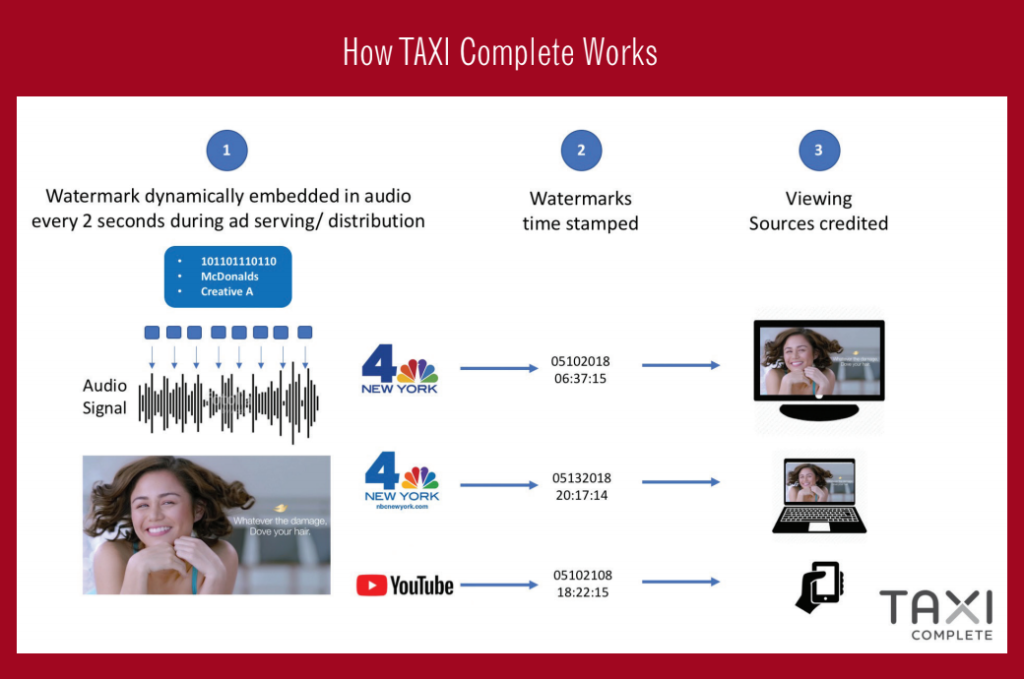Connections

M&E Journal: The Future is Now: Asset ID and Tracking with New SMPTE Standards
Story Highlights
By Harold Geller, Executive Director, Ad-ID –
In a world where content is king, tracking is critical. But the standards by which we identify leading advertising content have languished and long left advertisers with an overly burdensome process of acknowledging ROI potential, while not being able to immediately act on it due to human bandwidth or resource constraints.
This issue is compounded with the fact that there has not been a perfect solution to uniquely identify content and the advertising being served. That’s where standardization comes in.
Since 2013, an industry working group — led by the Coalition for Innovative Media Measurement (CIMM) — has focused on developing standards for embedding unique identifiers in content and advertising for persistent, asset tracking across various platforms. Whether that’s TV, internet, smartphones or otherwise, this group has partnered across the industry to manifest a solution to the tracking problem.
In June 2018, the Society of Motion Picture and Television Engineers (SMPTE) announced the creation of a pair of standards for the binding of unique content and advertising identifiers via audio watermarks for video content. At the core of this new standard is a collaborative initiative known as the Trackable Asset Cross Platform Identification, or TAXI Complete, meaning that the identifiers can now completely traverse the cross-platform video ecosystem.
How it works
Utilizing audio watermarking technology from Kantar Media, a creator can now leverage unique identifiers in video assets to facilitate the tracking of both content and advertising. This is similar to how we track books with machine-readable ISBN numbers or consumer packaged goods with UPC/EAN codes.
Why does this matter? Unique IDs remove the need for several manual touch-points along the content journey. From production or processing, transmission to consumption, the ID automatically supports content capacity planning, reduces human errors, and helps control costs — not to mention improves the consumer journey.
This tracking is facilitated by two registries that provide universal asset identifiers: Ad-ID and EIDR. On the advertising side, Ad-ID is the industry standard for identifying advertising assets across all media platforms, currently used by more than 4,000 advertisers, with nearly 3 million assets registered. For content creators, EIDR is a not-for-profit industry association operating a registry of nearly 2 million unique, global identifiers for digital entertainment assets, including motion pictures and television content.
 Why it’s significant for advertisers
Why it’s significant for advertisers
Having a unique ID maintained across several platforms serves multiple purposes. The critical opportunity that the TAXI Complete standards address is the ability to know when, where and in which content advertising is appearing, and to be able to determine information in real-time.
Additionally, from a brand safety perspective, advertisers can ensure their content assets are not appearing in inappropriate or out-of-context locations. Similarly, the metadata associated with the IDs can ensure brand collision does not occur, such as the same advertisements being viewed back-to-back by consumers.
Digging deeper at the consumer level, the metadata can identify those viewers “primed” to receive an ad because they have already expressed interest in a product or service. It can even recognize if the language for an ad is the appropriate language for the media publisher’s target audience.
What this means for the entertainment industry
Audiences are fragmented. The broadcast, media and entertainment industries cannot manually keep up with the overflow of content, how an audience digests it, and the ways in which their business model supports its usage. Unique IDs from EIDR offer a solution in the form of automating this information in an economical way, while providing a persistent identifier that applies to each individual piece of content.
For the first time, there is now a truly open standard for identifying both ad content and programming on traditional TV that’s in an automated, machine-readable format (either within a device or via a microphone-based system of detection). And while the standards are aimed at traditional TV, the new watermark can be discreetly embedded in the audio track of any video file, providing persistent cross-platform tracking.
This results in a streamlined process enabling more automated forms of measurement as well as the opportunity for monetization to arise—something industry leaders and content creators have been striving towards for years.
By using these IDs as a part of TAXI Complete, an advertiser can monitor where and when advertising was played, how much they spent to promote it, which creative execution and placements were the most valuable, and more. The data opportunities and impacts are endless.
Supporting real-time identification of a piece of content — whether on a smart TV set, a set-top box, an OTT streaming video device, or acoustically using a microphone-enabled metering device or smartphone app — the standards will reduce inefficiencies in the cross-platform video distribution and measurement workflow. This includes addressing time-consuming, legacy processes for matching program and ad names back to the time of airing and the distributor.
Those who are already Ad-ID users also continue to be more competitive in the advertising space. An advertiser can leverage the standardized metadata in connection with other integrated platforms to identify valuable content and spend dollars against only those unique content IDs that have proven to yield valuable ROI.
Opportunities on the horizon
The ability to track content and advertising assets across every platform comes with its challenges. That’s why EIDR and Ad-ID are participants in forward-thinking efforts. A few critical use cases have already been defined to standardize communications within and between M&E entities.
These include the enablement of new anti-piracy and copyright protection tools for video and music, on-the-fly media asset assembly, and improved automated content recognition and detection. There is also opportunity with second screen syncing, providing additional content to other devices in real time when a program is airing, opening the door for more novel applications to drive incremental revenue opportunities.
Moving industries forward
Industry support for this initiative has been impressive. As of today, many of the world’s leading brands have integrated Ad-ID’s unique identifiers into their media buys and placements. The secret behind Ad-ID’s growing success story has been its integration with a wide variety of industry specifications and codes making the process of asset tracking seamless in a complex and fast-moving ecosystem.
Additionally, as more brands and trading partners begin to implement the use of Ad-ID’s standardized industry code, additional benefits, including the avoidance and cost of programming redundancies, will be avoided.
On the content side, all major motion picture studios and TV network groups are EIDR members and actively encoding their video assets. As more titles become registered, IDs become more ubiquitous, and usage becomes more standardized, driving better overall value to the M&E ecosystem.
The SMPTE standard and Kantar audio watermark simplifies the integration of unique IDs into various platforms. Joining the TAXI initiative requires registering content assets with EIDR (www.eidr.org), and advertising assets with Ad-ID (www.ad-id.org).
Applications for embedding and detecting the content or Ad-IDs can be licensed from Kantar Media. The entire process is designed to require minimum effort and modest cost.
—-
Click here to translate this article
Click here to download the complete .PDF version of this article
Click here to download the entire Spring/Summer 2018 M&E Journal









